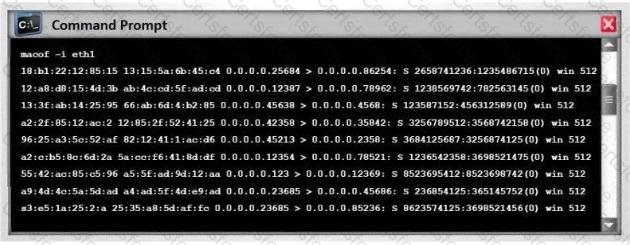Comprehensive and Detailed Explanation:
In a MAC flooding attack, tools like macof (shown in the image) rapidly generate a large number of Ethernet frames with spoofed source MAC addresses. These are sent to the switch to overflow its CAM (Content Addressable Memory) table.
Once the CAM table is full:
The switch can no longer learn new MAC-to-port associations.
It fails open and starts broadcasting all incoming traffic to all ports.
This causes the switch to act like a hub.
Consequently, the attacker can:
Sniff traffic that would otherwise be switched.
Intercept data not destined for their system.
From CEH v13 Courseware:
Module 8: Sniffing → Switch-Based Attacks → MAC Flooding
Incorrect Options:
B: A switch typically does not crash but reverts to hub behavior.
C: There is no factory default override behavior like this.
D: Packets are not dropped—this would defeat the attack’s purpose.
[Reference:CEH v13 Study Guide – Module 8: MAC Flooding and Layer 2 AttacksCisco Security Best Practices – Switch CAM Table Protection, , , ==================================================================, , ]

Submit